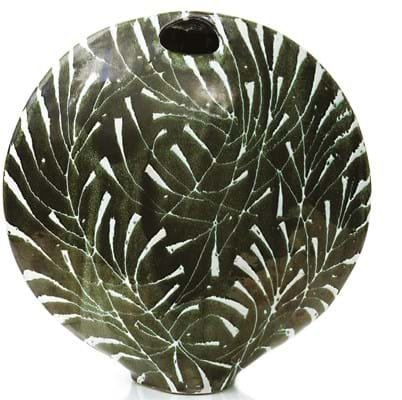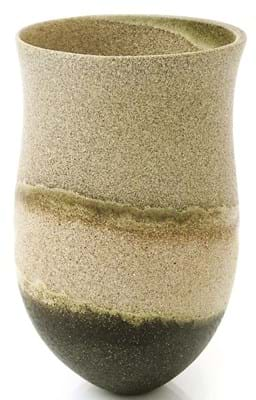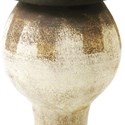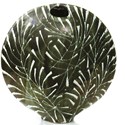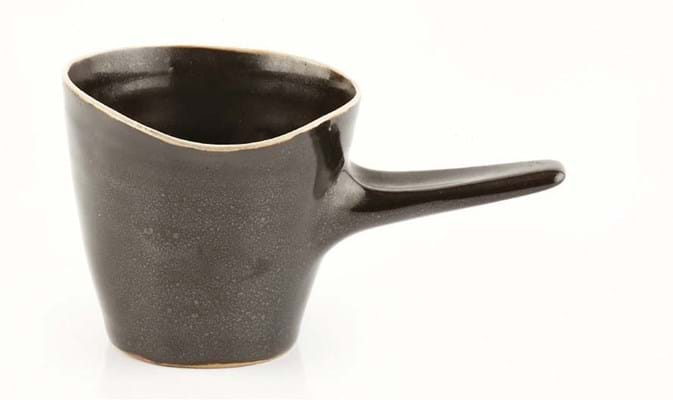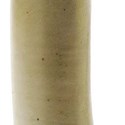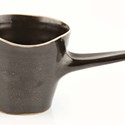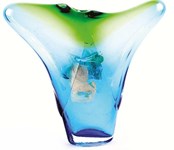W&W had the huge bonus of offering the noted collection of Prof Luke Herrmann (1932-2016) on December 13, before a wider-ranging sale the following day.
Prof Herrmann was best known as an art historian, pioneering the study of Turner’s printed works. However, his interest in studio pottery dates back to his time at the Ashmolean Museum (1956-67) where, as well as cataloguing English watercolours and drawings, he was responsible for the collections of European ceramics.
On his retirement from Leicester University in 1986, he built a noted collection later exhibited in the Ashmolean.
It was no surprise that 95% of the 137 lots from his collection found buyers at Salisbury. The hammer total of £371,000 was well above expectations.
“We had bidding from private collectors, museums and specialist dealers from around the world,” said W&W’s 20th century specialist Michael Jeffery.
“Interest in studio pottery is on a high. Prices for Hans Coper and Lucie Rie are regularly reported, but with this academically formed private sale the interest stretched further to include the Leach tradition, a fine collection of William Staite Murray and more contemporary potters such as John Ward and Jennifer Lee.”
Coper and Rie led the way. Coper’s 12in (30cm) tall ‘poppy head’ stoneware vase of swollen form with white slip over manganese and an impressed seal mark to base was estimated at £20,000-30,000 and sold to a private buyer at £38,000.
Three other stoneware vessels went within five-figure estimates, including a 9in (22.5cm) tall black glazed vase with a tapering foot supporting swollen disc body, made when Coper was resident at Digswell House in the late 1950s and early ‘60s. It took £30,000.
The best-selling Rie piece was a 7in (17.5cm) diameter porcelain footed bowl covered in a translucent apple green glaze with manganese speckles and a running bronze glaze to the rim.
Another private buy, it took £34,000 against hopes of £20,000- 30,000.
Rather surprisingly, four of the 19 Rie offerings were among the sale’s few casualties. However, other prices generally were within estimate, ranging from £750 for a pair of 3in (8.5cm) tall earthenware twin-handled pot and covers to £28,000 for a porcelain footed ‘knitted’ bowl.
Tower at £23,000
For now, at least, collectors of relatively modest means can just about secure something by a trophy name. Two works by the influential James Tower (1919-88), who worked at the Bath Academy of Art at Corsham in the early post-war years, made the point.
One, an 8in (20cm) tin-glazed earthenware goblet vase, with geometric panels in olive green-brown and a hairline to the rim, went within-estimate at £950.
The other was Winter Grasses, an 18in (45cm) globe-shaped stoneware vase with a white tin-glaze with wax relief. Incised James Tower 86, it was estimated at £10,000-15,000 and went to a private collector at £23,000.
Bernard Leach had been a natural starting point for Prof Herrmann’s studies – his 11½in (29.5cm) tall stoneware Leaping Salmon vase sold at £7600 – but the collection also illustrated an appreciation of lesser-known names of the time, including William Staite Murray (1881-1962).
Eleven of the London ceramicist’s works were on offer at Salisbury led by a rare 6in (15cm) stoneware Vorticist vase dated 1924. Of shouldered flaring cylindrical form, covered in an iron-rich glaze over celadon, it was incised with a signature and London 687. It more than doubled the top estimate, going to the UK trade at £2200.
Jennifer Lee (b.1956) was represented in the sale by four of her trademark coil-built stoneware pieces, all of which doubled the estimates.
Three sold in four figures but the top-seller, a monogrammed 7in (18cm) tall, sand-rich stoneware, asymmetric painted vase, went to a collector at £15,000 against a £4000-6000 estimate. It appears to be a record for Lee, bettering the £13,000 bid at Mallams in Oxford for a vase in 2016.
Another female potter – more than any of the arts, ceramics are an equal-opportunities field – was Yorkshire-trained, Essex-based Joanna Constantinidis (1927- 2000). From the 1950s onwards she produced the unusual thrown and altered forms described as “both austere and sensuous” by art critic and curator David Whiting.
All eight Constantinidis pieces found buyers, the best-seller being a 15in (39cm) slender stoneware vase of asymmetric form sprayed gold with iron spots. It went to a European collector at £2400 against an estimate of £300-500.
The next day’s 457-lot sale of British Art Pottery & Design included five hand-built forms by John Ward (b.1938).
Long admired by the cognoscenti, Wales-based Ward has come more into the public eye following recent high prices, topped by the monumental black and white pot sold for £18,000 at specialist London auction house Maak last May.
Top-seller in Salisbury was an 11in (28.5cm) wide, elliptical-section vase, with a turquoise-over-brown glaze and incised interior. Estimated at £800-1200, it sold at £2400.
Oxford studio revival
Many of the higher prices at the design sale at Mallams on December 7-8 were taken for Cotswolds furniture (see ATG next week) but studio ceramics again proved a major talking point.
It is a subject of particular interest to Mallams director Philip Smith, whose 20th century design sales have enjoyed a growing reputation since he joined the company in 2008.
“We began specialist studio pottery sales about seven years ago when nobody outside London seemed to be doing so,” he said. “We saw a gap in the market.”
For some years it seemed doubtful as to whether there was a market in the gap – all but the best-known potters enjoyed succès d’estime but less commercial interest. However, the collecting landscape is changing.
“There has been a steady rise of interest over the years,” Smith said. “Ceramics are being seen as art and now the trade is sitting up and noticing there is a market for them to work in.”
The first 175 lots at the 750-lot sale comprised studio pottery, with the 90% success rate akin to what Smith expects these days.
Many lots went for two-figure and low three-figure bids to collectors but even modest works by the big names crept into four figures. A 3in (7cm) pouring vessel, a collaborative work by Rie and Coper c.1960, was estimated at £500-800 and sold at £1500.
“Small works by Rie and Coper can still be affordable but not for much longer I would think,” said Smith.
This seems likely to be true of both Ward and John Maltby.
Bids for nine entries of Ward material ranged from an above-estimate £420 on a 3in (7cm) tall, red-glazed vase, to a top-estimate £2000 on a 9in (23cm) tall ovoid shouldered vessel with blue and black glazes and impressed potter’s seal.
All but one of the 19 works by Maltby (b.1936) got away. Prices started at £60 for a 3in (8cm) diameter tenmoku pot and cover with grass motif to the cover. But the top-seller was his 14in (36cm) tall signed vessel titled Suffolk Marshes with Black Bird which sold at £3000 (estimate £1000-2000).
Duckworth collection
A reminder of how much British studio ceramics owe to Austrian and German refugees fleeing the Nazis (including, incidentally, Prof Herrmann) was a collection of 19 pieces by Ruth Duckworth (1919-2009).
These were entered by neighbours of the artist when she lived in Kew before moving to Chicago in the mid-’60s.
Born Ruth Windmüller in Hamburg, she arrived with four siblings in Liverpool in 1936 and studied sculpture at the city’s art school before fellow refugee Rie encouraged her to be a ceramicist.
Prices at Oxford ranged from £60 for an ashtray with black interior to £2800 for a 3ft x 4ft (91cm x 1.22m) wall piece titled January Sunflower.
Perhaps her most eye-catching work, however, was her 22in x 14in (55 x 35cm) oil on paper Nude and Sunflower. It was part of her first solo exhibition in 1953 at the Apolilinaire Gallery in London, and at Oxford took £1000.
One other lot moving away from ceramics but in an associated aesthetic was a typical creation by Peter Collingwood (1922-2008) regarded by many as the pre-eminent British artist weaver of the past 60 years.
His 3ft 9in (1.15m) tall wall hanging ‘macrogauze’ of linen and steel rods, estimated at £800-1200, sold at £3000.
“A couple of years or so ago it would have made a few hundred,” said Smith.
He believes long underrated art textiles will follow studio ceramics into the wider, and much more expensive, world of fine art.




